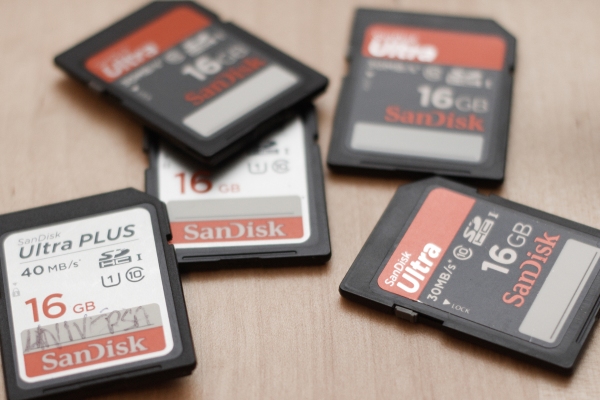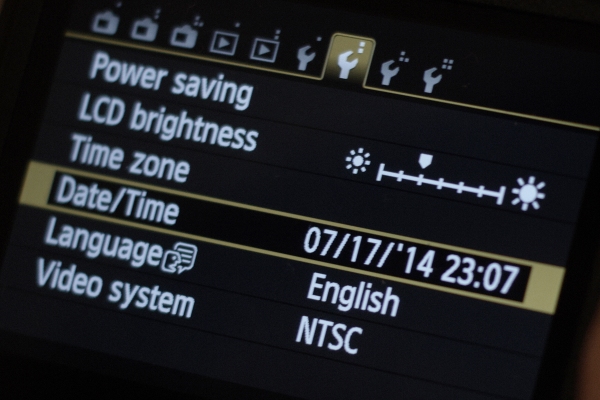$69+
on orders $69+

When creating a panoramic photo from multiple pictures, shoot all the images in portrait view - it makes it much easier for Photoshop to stitch your images together Photos create personal souvenirs that will last a lifetime. Here are a few basic tips to help you capture the best memories of your vacation:
1- Know your camera – Try to be as familiar with your camera as you can. Whether shooting in automatic mode on a point and shoot or manually with a DSLR (Digital Single Lens Reflex) camera, knowing how to use your camera to make adjustments in a snap let’s you capture precious moments you might have only seconds to take!
2- Stock up on Memory – Memory cards have increased in performance and dropped in price! DSLR cameras shooting in RAW format can fill up a memory card quickly so make sure you always have extra cards with free space. Shop for high capacity cards on sale before your trip; depending on where you are going it might not be as easy to find additional cards.

Memory cards are the least expensive component of your gear but you won't get far without any in your camera. Make sure to stock up when cards go on sale - try not to store all your images on one MASSIVE 128 gigabyte card that promises to do everything but could get lost and all is gone![/caption]
3- Bring a good bag – Packing and storing your camera and additional equipment is very important to ensure your gear arrives safely. Start with knowing how much you plan to bring and find a bag that can easily accommodate your needs with some room for everyday items you might want on hand. Selecting the “perfect” bag is a personal choice with many factors that will determine which one you choose. Many camera bags feature padded sections that offer protection against bumps and can be worn as a backpack or sling. PacSafe® camera bags have anti-theft features that include slashproof fabric and lockable zippers to protect your gear from thieves. And make sure never to put your camera or lenses in any checked bag!
pacsafe® anti-theft camera bags come in a wide range of sizes for point and shoot - DSLR - even the new popular mirror less compact lens cameras. All bags feature eXo-mesh lightweight stainless steel wiring, lockable zippers and padded compartments for your camera & accessories.[/caption]
4- …But don’t use the bag all the time – Just because you brought your camera bag doesn’t mean it should be glued to your back! Many bags can weigh over one pound when they’re empty, so lighten the burden occasionally and leave the bag behind to carry just the camera with a suitable lens attached. If you are visiting a high theft area, we recommend flipping your camera strap inside out so you aren’t announcing to the world what a high priced camera you have.
5- Check your camera date settings – With daylight savings time affecting the bulk of the population, it can often get overlooked to check the time and date settings on your camera. This is particularly useful if you happen to take more than one camera with you; after your trip it will be much easier to sort and categorize your photo collections by date and time.

Avoid the frustration of having images from multiple cameras synced out of place after importing to the computer by making sure all your cameras are set to the same date. On most cameras you can even change the naming sequence and change the folder where your images get stored for a specific trip making it even easier to manage your photos afterwards.
6- Wake up Early - Beat fellow travelers and sleeping locals by heading out early to take pictures. You'll have A LOT less people crowding your shots and more time to capture photos from different angles. And take advantage of the most available sunlight!
7- Use a lightweight tripod –Compact tripods fit in a camera bag and are handy to have with you. Taking photos at night, especially of cities or landscapes, requires a slow shutter speed and small aperture in order to get the greatest amount of detail in focus. A tripod lets you capture stunning photos in the best possible quality by stabilizing the camera. It’s also a great way to take pictures with you in the scene using the timer feature on your camera or a remote trigger to snap the picture wirelessly!
8- Add a little flash, even in daylight – You can avoid pictures with over-exposed backgrounds and poorly lit people by adding a little flash from your camera to lighten their faces. On very sunny days it can help brighten your subject, especially if the sun is behind it. Try not to use the flash at full power as this creates a “deer in the headlights” look and can alter the lighting to make your subject appear photoshopped into the picture. When shooting at night, reduce the full power setting of flash when taking portraits.

Reducing the power of the flash on your camera - even at night - will result in more even and natural lighting. Bringing a remote trigger and compact tripod can avoid having to ask other people to take your picture :)
9- Bend your knees – Try taking pictures from low or high angles instead of standing straight. Or try getting lower when taking photos of tall objects like buildings to further enhance the height. Look to take photos of objects from a side angle rather than straight on to give your photo more depth.
10- Write it down – After importing your photos, it’s good practice to write down a quick word or two to describe what was on the card. High-resolution images can take up a lot of space on your computer so it’s wise to save only the very best photos and store your cards with all images still on them in a safe location. Storing your photos on memory cards can be a cost effective way to archive images corrupt free for many years. You can also transfer your images to an online storage service or portable hard drive.
11- Have fun – The most important thing, always, is to enjoy the process. Take photos that interest you and don’t be afraid to take multiple shots to get the perfect one. Walk around, look for different angles, take your time and make sure you are happy with your picture before moving on. You never know when you’ll be back and if the landscape will be the same if you do return (chances are, it won’t!). Don’t get caught up trying to replicate every picture you’ve seen online. Travel photographers visit locations with specific gear for numerous days at different seasons to get those stunning images. Capture the photos and memories that are important to you.
12- Share your photos – Print them up, hang them on your wall, create a stunning photo book or collage, post them to social media. Don’t let your photos sit on your computer – share them with the world!
Leave a comment